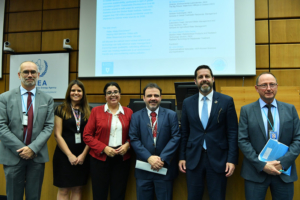5 Ways to Support Sustainable Development Goal 2

In 2015, the United Nations established 17 Sustainable Development Goals (SDGs) for creating global change in key areas by 2030, especially in lower and middle-income countries. The second of these goals, Zero Hunger, aims to “end hunger, achieve food security and improved nutrition and promote sustainable agriculture.” According to Action Against Hunger, in 2021, hunger affects almost 10% of the global population. Furthermore, just between 2019 and 2020, the number of people suffering from undernourishment globally rose by 161 million. To prevent the dire consequences of not reaching Sustainable Development Goal 2, the U.N. has suggested several steps for individuals to take to support this goal.
5 Ways to Achieve Zero Hunger
- Shop Local and In-Season. Eating locally-grown foods helps to support smaller-scale farmers in one’s community. Buying in-season foods also helps sustain local, native crops and plants. Preserving native crops helps increase genetic diversity as it increases the number of plant species in a given area. Maintaining genetic diversity in food production across the globe is one of the targets of Sustainable Development Goal 2 as this allows the plants with favorable traits — those that are resistant to pests or are able to provide higher yields — to proliferate.
- Reduce Food Waste. Food waste is one of the greatest barriers to eradicating hunger as food that could serve food insecure populations instead ends up in landfills. According to Feeding America, U.S. citizens waste “108 billion pounds of food” annually, equivalent to 130 billion discarded meals. However, food waste is not an issue unique to high-income countries: the U.N. Environment Programme’s “Food Waste Index Report 2021” has found that lower-middle-income nations annually discard 201 pounds of food per capita at the household level. In comparison, for high-income nations, this amount is 174 pounds per capita per year. To reduce food waste, people can freeze extra produce and save leftovers from meals. They can also buy “ugly” produce from the grocery store, which often ends up going to waste because it is less aesthetically desirable. However, the slightly misshapen produce found in grocery stores is still perfectly good to eat. In addition, staying informed on anti-food waste initiatives in low- and middle-income countries helps to develop global awareness and better understand the progress that these countries are making toward achieving Zero Hunger.
- Reduce Meat Consumption. The U.S. imported $216 million worth of beef from Brazil in the first nine months of 2021. Approximately 80% of deforestation in the Amazon is due to cattle ranching. Deforestation can have negative impacts on food production thousands of miles away. For example, deforestation of the Amazon at 40% would significantly decrease rainfall in the Rio de la Plata agricultural basin more than 2,000 miles away. Such droughts lead to decreased crop production, negatively impacting local farmers. To help mitigate the impact of the meat industry on deforestation, the U.N. has suggested that individuals consider vegetarianism for just a day per week. Just one day of vegetarianism could preserve “3 million acres of land.” Even though those who live in North America may be physically far away from local farmers in the Amazon, individual eating habits still impact these farmers.
- Support Organizations Focusing on SDG 2. Two organizations working to improve food security worldwide include the Global Alliance for Improved Nutrition (GAIN) and the World Food Program (WFP). GAIN focuses on providing aid to women, children and adolescents. One of its programs is Better Diets for Children, which provides support to small-scale food manufacturers in low- and middle-income countries to make nutritious, safe food more affordable and accessible. The program spans eight countries and aims to help more than 120 million people. The WFP provides food assistance to victims of extreme events, such as those facing natural disasters and conflict. The organization operates in more than 80 countries and provides more than 15 billion life-saving meals each year. One of the WFP’s programs is the food assistance program, which provides “cash-based assistance” so that families can afford nutritious food.
- Stay Informed and Spread the Word. Staying updated on global hunger reduction initiatives is important for tracking progress made toward Sustainable Development Goal 2. The U.N. SDG website and social media stand as great resources in this regard. It is also important to educate others about Sustainable Development Goal 2 by sharing ways that others can help and the organizations that people can support in achieving this goal. Social media serves as an essential tool for raising awareness of global issues.
Looking Ahead
Minimizing hunger is an important step in the sustainable development of low- and middle-income countries. By taking action to support Sustainable Development Goal 2, each person can help improve food security and small-scale agriculture worldwide.
– Aimée Eicher
Photo: Flickr
